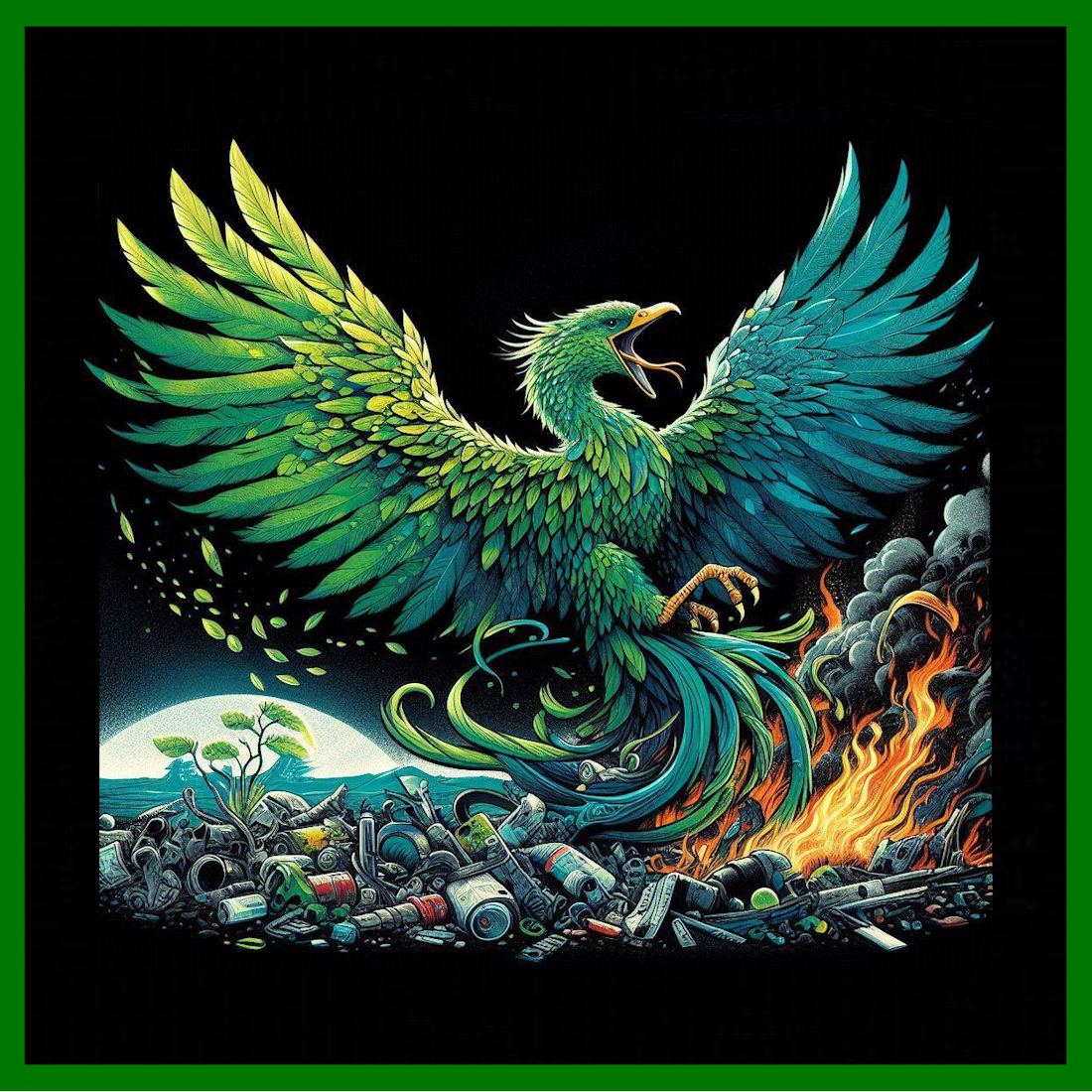The Real Paths to Ecocivilisation - Epilogue

This book is now available in an easier-to-read format: The Real Paths to Ecocivilisation: Part Two
[Back to contents][This book is available in print form.]
By 10,000 AD, the human species, now deeply integrated with the ecological systems of Earth, has achieved an unprecedented balance with nature. After millennia of painstaking recovery and adaptation, Earth’s climate has stabilised. Radioactive fallout from 21st century conflicts, though devastating in its time, accelerated the mutation rate, giving rise to new, resilient ecosystems. Humanity has moved beyond its industrial past, and is now in a stable relationship with Earth’s ecosystems.
Technology is now almost entirely biotechnology. Cities are living organisms, integrated into ecosystems rather than dominating them. A system of global governance ensures that all human activity remains within ecological limits. The scars of previous collapses serve as eternal reminders of the consequences of overreach. Ethical systems are rooted in deep ecology, viewing humans as one species among many, with a responsibility to care for the biosphere. Traditional concepts of individualism have been replaced by a more collective consciousness, fostered in part by conscious quantum biocomputers. Through centuries of experimentation and integration with biotechnology, human consciousness has begun to expand beyond traditional biological constraints. Consciousness now interfaces with the biocomputers, which are not only computing devices but sentient entities, helping to manage ecosystems with sensitivity and awareness.
With Earth’s ecological balance restored, humanity’s gaze turns outward. Mars, long the subject of fascination, is the next grand challenge. The project to terraform Mars is not driven by a desire for colonisation in the old sense, but intended as an extension of Earth’s biosphere – a new frontier for ecological and planetary restoration. The biocomputers guide the project. Linked with human decision-makers, they are capable of running endless simulations and designing highly specialised microorganisms that can thrive in Martian conditions. Their function is to alter the atmosphere, breaking apart carbon dioxide molecules to release oxygen and metabolising rocks to release nitrogen. Mars’ temperature is being raised by lichen-like organisms that darken the surface and orbital mirrors to reflect sunlight onto the planet. This warming triggers the release of water trapped underground, beginning the process of forming rivers, lakes and shallow seas.
The project is a slow, centuries-long process, but with each step Mars becomes more hospitable. It follows strict ecological and ethical principles. Rather than simply replicating Earth’s ecosystems, the new biosphere is designed to respect the planet’s unique conditions, allowing Martian ecosystems to develop in their own way. Terraforming Mars represents the culmination of millennia of philosophical evolution. It is seen not as domination over nature but as the nurturing of new life – a profound act of ecological creativity.
Humanity has evolved beyond the catastrophes of its past, embracing a caretaking role, not just of life on Earth but across the Solar System. The Mars project represents both a technological triumph and a spiritual mission: to extend life to new worlds.